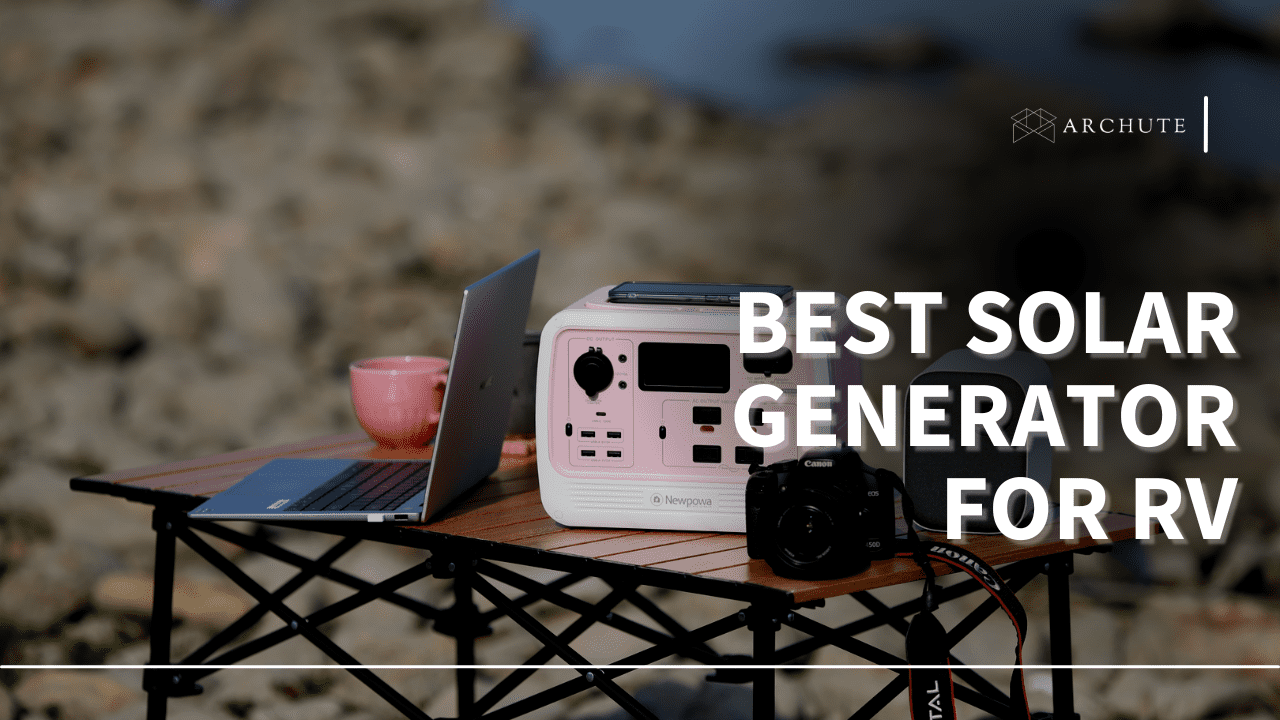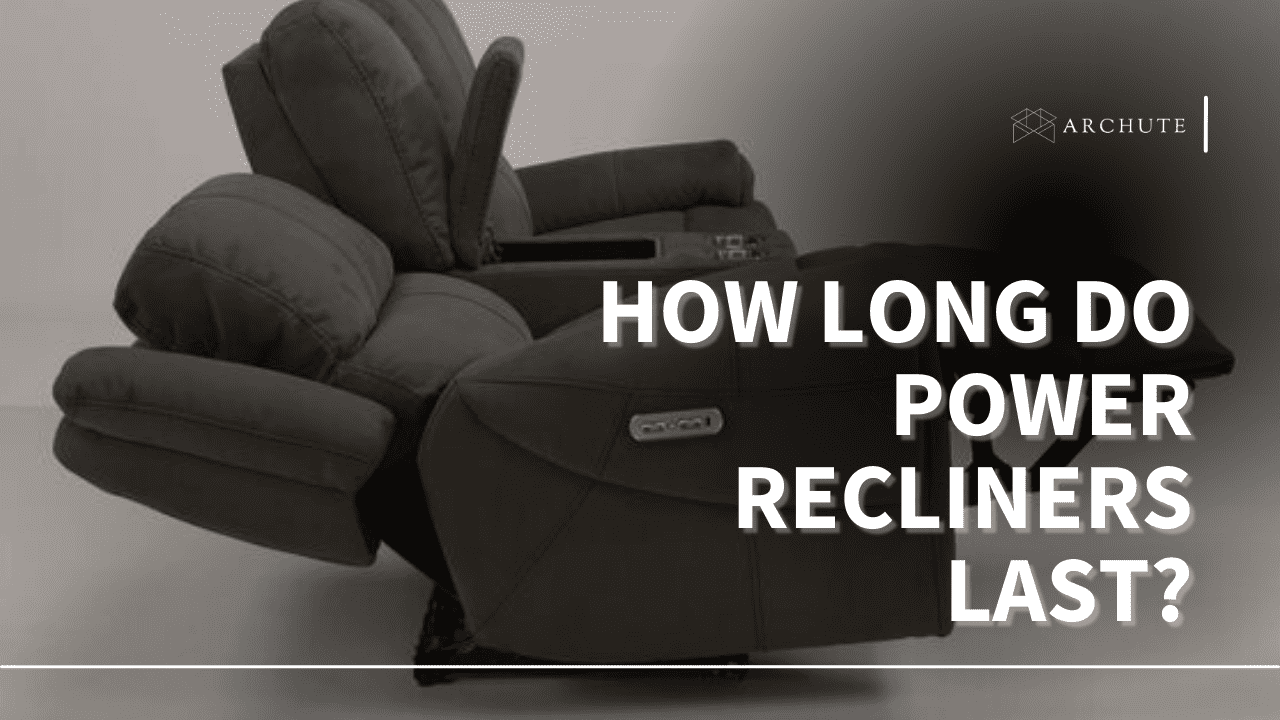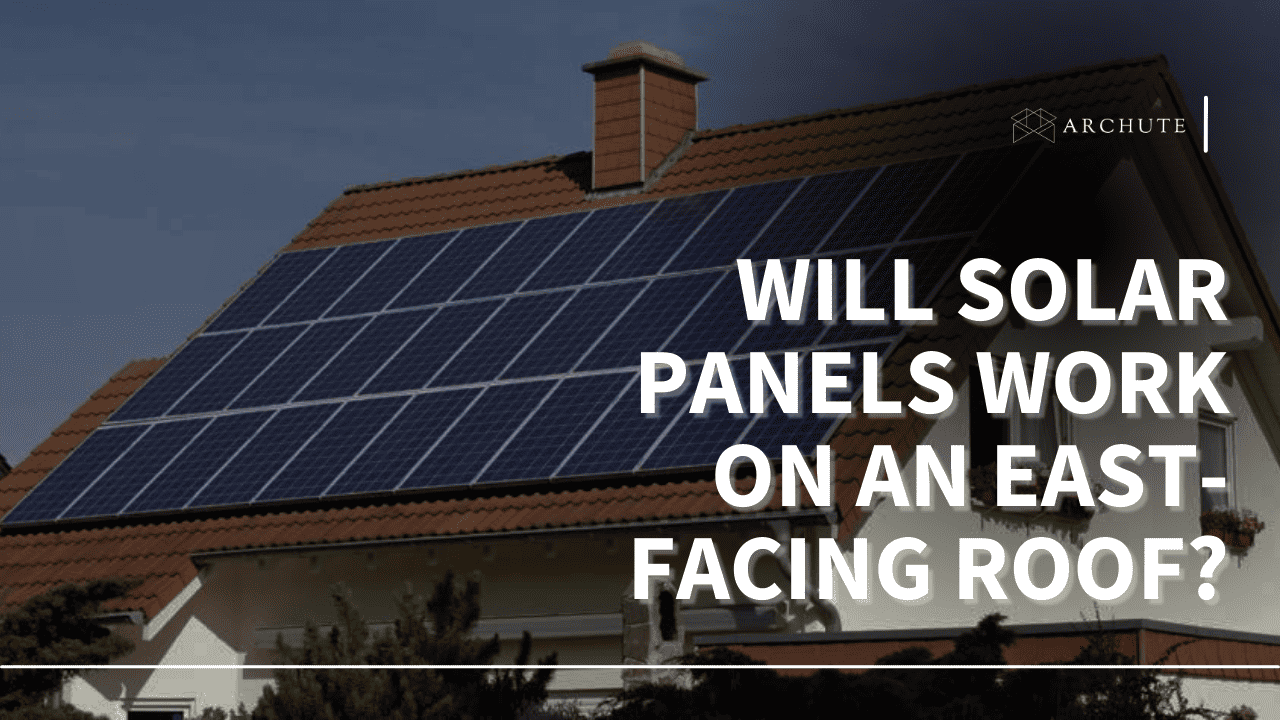Your camping appliances would not work without electricity. Similarly, living in a van can be more bearable with the addition of the best solar generator for RV and van life. A portable solar generator can be exactly what you need if the thought of building a whole camper van electrical system bothers you.
You can keep your appliances going all day long without needing any electrical expertise and with very little setup time, even if you're completely off the grid.
While camping and living in an RV in remote locations, I've tested numerous solar generators and compared them to determine the most effective ones.
Read this buying guide to learn more about the features to look for in a portable solar generator for use while camping, living in a van, or travelling in a recreational vehicle.
What Is a Solar Generator?
A solar generator is a machine that transforms energy from the sun into an electrical current. It is a large battery pack with an AC/DC inverter that can produce 110 and 12 volts of electricity.

But in technical terms, it isn't a generator. Instead, this structure serves as a power plant. Solar panels produce electricity when you plug them into your solar power station.
If you're taking your luxuriously converted Sprinter on the road, you may want to invest in a more powerful solar generator. We've identified the most efficient solar generators to power your home's appliances, including the lights, refrigerator, and blender.
Rank | Product Image | Brand Name | Link |
|---|---|---|---|
1 | |||
2 | |||
3 | |||
4 | |||
5 |
1. Jackery Explorer 1000 Portable Power Station- Best Solar Generator for Van Life
- MASSIVE CAPACITY & IMPRESSIVE ENDURANCE: With the 1000W wattage...
- UPGRADE ENDLESS SOLAR POWER: As an option to own the endless...
- POWERFUL & VERSATILE PORTS: The Explorer 1000 features 3 standard...
- NOISELESS, STRONG & SAFE: At a such large capacity, this Explorer...
- WHAT YOU GET: 1* Jackery Explorer 1000 Portable Power Station...
Since I've been using them for so long, Jackery solar generators are my favorites; I'd go so far as to say that Jackery produces the best solar generators available.
If you're searching for the best solar generator for van life, go no further than the Jackery Explorer 1000 Portable Power Station. I got an output of 1,000W continuously and 2,000W at its peak thanks to a lithium battery with a capacity of 1002Wh (46.4Ah).
For this reason, we found it ideal for powering various devices, including relatively large ones. Plus, my device still worked after being unintentionally left outside in the torrential rain for about 30 minutes.

Image Source: jackery.com
This solar generator offers two USB-C connectors and USB-A ports in addition to three conventional AC outlets, a 12v DC carport, and a 120-volt DC outlet. Therefore, I can connect my installed solar panels to the Jackery Explorer 1000 using any connection.
This generator also includes an LCD panel that shows charge/discharge data and a pure sine wave inverter. Under ideal sunny conditions, a solar panel can charge a Jackery Explorer 1000 in just 6.5 hours.
If you don't have a solar panel or are experiencing bad weather, you can charge it in your vehicle in 11.5 hours or 5.5 hours from an electrical outlet.
Pros:
Cons:
2. Westinghouse iGen160s Portable Power Station
- VERSATILE OUTLETS CHARGE UP TO 9 DEVICES AT THE SAME TIME:...
- HOURS & HOURS OF POWER ON A SINGLE CHARGE: 155 Watt-Hours of...
- SMALLEST, LIGHTEST PORTABLE POWER STATION IN ITS CLASS: At 3.75...
- CHARGES AT HOME, ON THE GO, OR IN THE FIELD: Charges to 80% in...
- ECO-FRIENDLY POWER GENERATOR: Reduce Your Carbon Footprint for...
As one of the lightest (at 3.75 pounds), and most efficient solar power systems available, the Westinghouse IGen 160s is a convenient choice for travelers. Not only that, but the price is also incredibly reasonable.
The IGen 160s is an excellent low-cost choice if portability and short vacations are your top priorities. However compact it may be, it provided me with enough power outlets to charge my nine devices simultaneously. There's a lithium-ion battery inside with a capacity of 155Wh.

Image Source: westinghouse.com
The IGen 160s are compatible with solar panels, standard wall outlets, and even a car connector for charging. If you plug it into the wall socket, it will take about six hours to charge to 80%; using a vehicle port or solar panels will take about seven hours.
Pros:
Cons:
3. Renogy Solar Generator Phoenix 300 Portable Power Station
- [POWERFUL PORTABLE POWER STATION] Renogy Phoenix 300 generator...
- [REVOLUTIONARY SPEED] Equipped with a 60W quick charge Type-C...
- [Durable & Secure] With a UL-listed lithium-ion battery, it is...
- [3 Recharging Methods] The Phoenix is able to be recharged with a...
- [What You Get] 12 months warranty. Package includes --- 1* Renogy...
The Renogy Phoenix 300 has a maximum solar input of 300W and a storage capacity of 337 Wh. In addition, it has several different outputs so that you may connect just about any item, including USB gadgets and AC appliances, up to 300W.
The Phoenix features an easy-to-read LCD screen and a built-in flashlight. Weighing in at only 6.4 pounds, the Phoenix is easily transported from one location to another.

Image Source: renogy.com
It features a 12v DC input connector, which can be charged from your car's cigarette lighter, the sun, and standard electrical outlets. Thus, it is ideal for weekend tent camping or camping trips that require a car.
Pros:
Cons:
4. Bluetti AC200P Portable Power Station
- [Power Monster] - With the remarkable 2000Wh of capacity and a...
- [3500+ Life Cycles to 80%] - The ultra-safe LiFePO4 battery cells...
- [Efficient Recharging Rate] - AC200P supports up to 700W solar...
- [17 Versatile Outlets] - 6 AC ports, standard USB-A/Type-C/Car...
- [What You Get] - BLUETTI AC200P portable power station, AC...
The Bluetti AC 200P has five different charging modes and 17 different output points, making it impossible to resist. I could use many devices simultaneously because of the 2000 watts of constant power. To top it all off, I still have plenty left for my air fryer.

Image Source: bluettipower.com
The best part is that I can use three solar panels to power the station simultaneously. It takes less than 4 hours in direct sunlight to fully charge from zero. This solar-powered generator for RVs also has many USB ports, conventional 110V and 12V outlets, and two wireless charging points.
Pros:
Cons:
5. Goal Zero Yeti 1500X Portable Power Station
- RELIABLE PORTABLE POWER: With a lithium-ion battery at its core,...
- HIGH POWER ON THE MOVE: Our best-selling large power station...
- EASY TO USE: Power a wide range of devices with seven different...
- THREE WAYS TO CHARGE: Plug the Yeti 1500X into any 120-watt wall...
- POWER IN THE PALM OF YOUR HAND: Monitor, control, and optimize...
Goal Zero offers a variety of portable solar generators with outputs ranging from 150 to 6000 watts. That means you can find the perfect one for your situation.
My Yeti solar generator experience was pretty comparable to the Jackery. Both of them are excellent, dependable devices. Although the Yeti is a little more expensive, it has a 2-year warranty compared to the Jackery's. So with theirs, you have a little bit more peace of mind.

Image Source: goalzero.com
The most well-known huge power station from Yeti is the Goal Zero Yeti 1500X Portable Power Station. It includes a powerful 2000W AC converter that enables me to use it with anything charged from a wall socket.
The 1500X provides dependable, clean electricity that can be used off the grid thanks to a compact lithium-ion battery. You can operate several high-power devices with the 2000W AC inverter's 3500W surge capacity.
Pros:
Cons:
How to Charge Portable Power Stations

The versatility of solar generators is one of their best features for van living. Most van-life solar generators have three different charging options. This gives you great freedom regarding where and when you charge up, regardless of the weather.
1. Solar Power
The most basic and straightforward approach is to use solar energy to recharge your solar generator. A solar generator can have a solar panel, or a set of solar panels, connected to it to recharge a battery.
If you need to power your generator, this is a great way to use the sun's energy wherever you are.
2. DC Outlet
You can also use the 12v DC outlet in your car to recharge your solar generator. The power for the "cigarette lighter," also known as the circular outlet, comes straight from the battery in your car.
These chargers can be purchased separately or may be included in the package. Using this strategy, you can keep your generator powered up even when traveling. For example, it works perfectly to recharge the solar generator in your camper van.
3. AC Charging
Alternating current (AC) charging through a shore power connection or another AC power source is the third and final choice for solar generators' power sources.

Connecting a generator to a typical 110v outlet can charge it at home or from a campground. In most cases, this is also the quickest method of charging your solar generator. Plus, many solar generators allow you to combine charging techniques, the three mentioned, for a faster charge.
What Should You Consider When Buying the Best Solar Generator for RV?
1. Battery Capacity
Battery capacity, often defined in watt-hours (Wh), defines how much energy your batteries will store. The larger the battery, the more energy it can hold and the longer your electronics will run before recharge.
2. Battery Type
Lead-acid and lithium-ion are the two most common types of batteries. Lithium-ion batteries are far superior to lead-acid batteries because of their higher energy storage capacity, lower maintenance needs, and longer lifespan.
3. Inverter
Most electronic devices require alternating current (AC) to be charged, while batteries only provide direct current (DC).

Devices that use 12 volts of DC power, such as those that plug into a car's charger or cigarette lighter, are commonplace. However, the 2- or 3-pronged socket on most domestic appliances, which correspond to the 110, 120, and 130-volt range, is AC power.
Find high-efficiency generators that have been proven to use a pure sine wave inverter if you want better electricity with less energy loss during the DC/AC inversion process.
4. Power Output
Power output is the maximum wattage that a gadget can produce before the circuit breaker trips and shuts down. The Jackery 1500, for instance, is a portable power station that can deliver up to 1800 watts of power. In contrast, the Jackery 300 can only output 500 watts at once.

However, it's not advisable to maintain output at a rate higher than 30% of the system's maximum capacity. Consequently, the total power consumption of everything you're running off a Jackery 1500 shouldn't be more than 540 watts.
It's important to note that the 1800-watt capacity is intended for very brief bursts of activity, not continuous operation.
The greater the generator's power output, the more appliances it can support. Again, it all boils down to what you need.
5. Charging Time
Different solar generators charge at different rates. For instance, most Ecoflow solar generators charge far more quickly than their competitors; this is one of their selling advantages.
Some people may value a quick charging time more than others. However, remember that a faster charging time typically translates into a quicker depletion time, so faster isn't always better.
6. Dimensions and Weight
There are many different sizes and styles available for portable solar generators. You should strike a balance between how much power you need and how portable you want it to be.

Some of the more powerful solutions listed here are transportable, but they are quite bulky and take up a lot of room. Those with less strength can be easily transported. Determine how much electricity you'll need, then pick a generator that can provide it while yet being conveniently carried.
7. Price
Given a choice between two generators, if one is somewhat superior but significantly more expensive, I'd go with the less expensive one. However, this is again a matter of taste. Solar generators are pricey, though you get your money's worth.
Frequently Asked Questions (FAQs) on Solar Generators for RV
1. What can a solar generator with 1000 Watts of power do?
A 1000-watt generator can power several smaller devices, including lights, computers, coffee machines, dishwashers, and a slow cooker. Furthermore, they can power your flat-screen TV, portable fridge, and small power tools.
2. What Size Solar Generator Is Required to Power a Refrigerator?
The fridge's capacity is a key factor in this. A 1000-watt generator is sufficient for powering a small portable fridge designed to be used in a recreational vehicle or while camping. However, home refrigerators will need at least 2000 watts of power.
3. Are Solar Generators Practical for Daily Use?
A solar generator can be used daily as long as it is kept in good working order. However, you shouldn't leave it running nonstop. Here are some pointers for maintaining your generator:
- First, use it only once every 8 to 16 hours.
- Never use more than 95% of its charge capacity
- Instead of storing it at full charge, do so at 30–50%.
If you follow these guidelines, your generator will serve you well and last as long as possible.





















